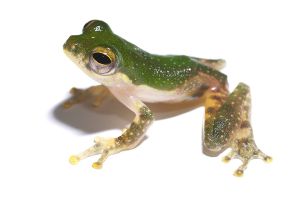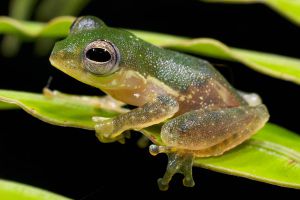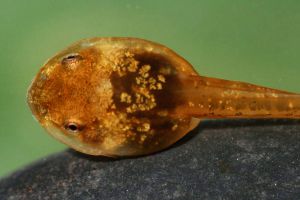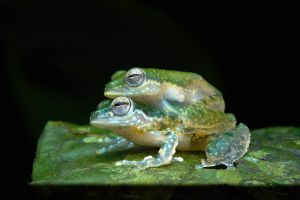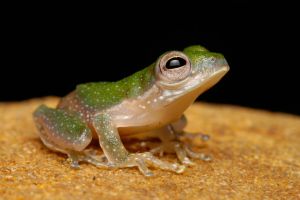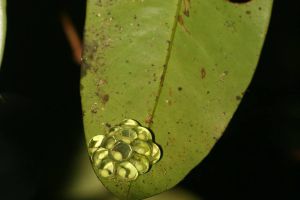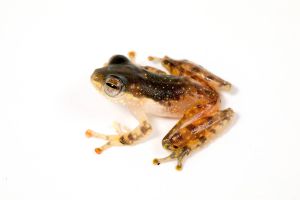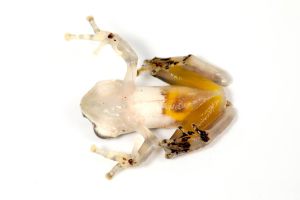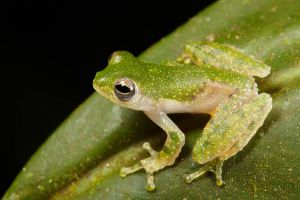
Frogs of Borneo

Frogs of Borneo

Frogs of Borneo

Frogs of Borneo

Frogs of Borneo

Frogs of Borneo

Frogs of Borneo

Frogs of Borneo

Frogs of Borneo

Frogs of Borneo

Frogs of Borneo
Bornean Families
Feihyla:
kajau
White-eared Tree Frog
Feihyla kajau is a beautiful, small frog, reaching 20 mm in males and > 20 mm in females. It has a soft, high pitched call. It is easily overlooked in the field and was scientifically described only in 1984 by Julian Dring although certainly present in many places in Sabah and Sarawak. It appears quite common in lowland habitats.
The body is slender, with a very short, blunt snout and eyes directed slightly forward. Finger and toe tips are broadly rounded, with webbing present at the base of the outer fingers and the toes approximately half-webbed. The dorsal skin is finely shagreened, with a wavy edge along the outer border of the fourth finger and forearm, as well as along the outer edge of the foot. Coloration is green above, abruptly ending at the flanks. The posterior (pelvic) region is brown. There are scattered white dots across the dorsum. The venter is white anteriorly and transparent posteriorly. The iris is silvery below and golden above, with some dark reticulation and a golden ring around the pupil. The pupil is horizontally oval, and the eardrum is present but small and inconspicuous, blending in with the surrounding skin.
These frogs sit on vegetation, 1–2 m high. They prefer small streams with slow current for reproduction or even stagnant pools that become ephemeral streams during the wet season. Clutches with only a few eggs are attached to leaves overhanging water. No foam nest is produced.
The tadpoles are easy to recognize. They have a dark brown saddle across the trunk. Body shape is ovoid. The iris is bronze with a red cross-bar. In close-up, there are conspicuous golden and silver pigments on the sides of the trunk. The skin of the belly is translucent. The tail fins are well developed. The tail tip is moderately pointed (the specimen on the photo has a damaged tail tip, possibly the result of a dragonfly larva attack).
Version tracking
-
11.09.2025
upgrade images
